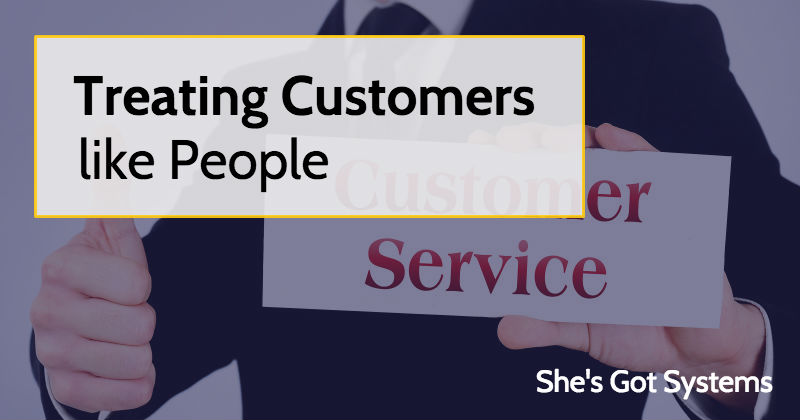Do you ever receive an email from a store or business and wonder “who writes this crap?” Or is it just me?
For years now I’ve been increasingly frustrated with the jargon filled, key word heavy, content light emails that come our way – not just newsletters and sales emails but customer service ones as well. No matter how you’re reaching out and touching your community, if you sound like a cyborg while doing it then your customers are going to be turned off.
Here are my top 3 tips to treating your customers like people by behaving like a human:
Tip 1: Read emails aloud before hitting send
It might seem silly at first but if you were to read aloud the email you’re about to send to an upset client, a freebie seeking lead or a potential partner you’ll likely pick up on some language choices that should be reconsidered.
For example, “we don’t do that” can sound pretty harsh, especially since tone is very difficult to convey in text. Instead try rephrasing to “we don’t provide that option but will discuss if it’s something we can include in the future!”
When you read aloud it’s easier to catch techno speak or phrasing that could be the wrong tone. This goes both ways too – sometimes you want to be more firm and the language is reading too soft.
Tip 2: Re-optin to your list and experience with fresh eyes
If your email sequences have been up and running for more than a year it’s time to put yourself back in the newbie shoes. Does this communication feel welcoming and authentic? Does it reflect your current brand?
I won’t lie, this is a big time investment to go through your sequences step by step so if you have a team member you can trust to give it a look first that’s a good place to start.
The problem is that as your business and brand evolve, your customer touches need to evolve with it. This might be as simple as updating your banners with a new logo or changing the introductory offers you make to reflect your current funnel. Either way, stale content isn’t going to attract and convert the new clients you want in your business.
Tip 3: Empathize with clients but follow your policies
One of the reasons I hate calling AT&T is that every single employee is interchangeable as they read the same scripts. By the third time I hear “I’m so sorry to hear that…” I’m fuming with the insincerity of it all.
While you want your own team to have some standard language and definitely policies to follow don’t make them sound like robots. If a team member is apt to write “Oh no! That must be so frustrating! Let’s figure out how I can help you get that resolved…” don’t force them to rephrase it to “I’m so sorry to hear that… let’s troubleshoot the issue…”
Most tensions in customer service can be diffused by being human and that means being yourself and not acting. This is one of the reasons we recommend that you hire people based on who they are, not what they know. Anyone can learn to follow a script but someone who is not engaged and caring and helpful can’t be taught those qualities in a few weeks.
In the end, your customer service experience speaks to your values, brand position and defines your business.
Want more tips on how to improve your customer service? Check out this Business2Community round-up for ideas.

 You’re (not) Hired!
You’re (not) Hired! Whip or No Whip – Why Customer Experience is paramount
Whip or No Whip – Why Customer Experience is paramount Customer Service Skills Your Biz Needs
Customer Service Skills Your Biz Needs